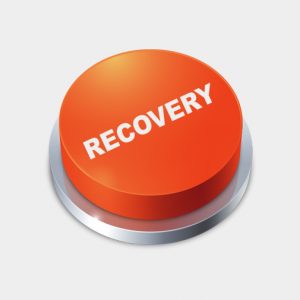Written by: Dr. Sharmila Banerjee
About the author: CEO at Green Chillies Motion Pictures | Founder and CEO -IWLF | The Leadership Consortium

It is almost 4 months which have passed since the lock down has happened and COVID has impacted us drastically. Apart from the impact of the disease itself and the loss of lives it has created, the single biggest impact has been on the economic structure of India. At Least 70 percent of the Indian economy runs on consumer expenditure, which is the worst impacted. A lot of businesses have been impacted and many have shut down and perished completely. Some of them are still alive and are just managing to stay afloat. This entire scenario has led to the entire business world to make huge reforms.
Most of the people are now working from home and are rethinking on their business strategies to adapt to this new situation. MSME’s are the epicenters of the crisis. The micro, small and medium enterprises sectors revenue growth is shattered in this fiscal year completely due to the pandemic. According to the figures released by CRISIL, Indian economy will contract 5% less this fiscal year and the worst affected sector will be MSME’s. This is already apparent with falling sales and dropping revenue, and businesses struggling to survive. For a lot of small businesses, the current situation is bleak with little or no hope of survival.
The All India Manufacturers Organization has estimated that about 35% of MSME’s and 37% of self-employed individuals have shut down their businesses as there is no chance of recovery. Businesses may be flourishing pre-covid but it is the time of the crisis that shows its true resilience. This has been proved by the fact that only organizations with efficient risk management systems and strong IT infrastructure have survived through the past months. Reforming and bringing changes to the business is the need of the hour. An advantage that India has is its large market and strong industrial base to fall back upon.
Hence, organizations need to work upon their product innovation, quality and sustainability, if they want to thrive in these times. The importance of hygiene and safety is now foremost, and at the same time people need to have an alternative to their resources. The crisis has taught that good bonding with the supply chain is beneficial and being sensitive towards nature will make their business more sustainable.
What will it take to navigate this crisis, now that our traditional approaches and assumptions have been rendered irrelevant? According to Mackenzie
Their answer is a call to act across five stages, leading from the crisis of today to the next normal that will emerge after the battle against corona virus has been won: Resolve, Resilience, Return, Re-imagination, and Reform

Resolve
Address the immediate challenges that COVID-19 represents to the institution’s workforce, customers, technology, and business partners.
Resilience
Address near-term cash-management challenges and broader issues during resiliency virus-related shutdowns and economic knock-on effects
Return
Create detailed plan to return business to scale quickly as COVID-19 situation evolves and knock-on effects become clearer
Re-imagination
Re-imagine the next normal: what a discontinuous shift looks like and implications for how institutions should reinvent
Reform
Be clear about how regulatory and competitive environments in industry may shift
Due to the chaos and the incoming advice, it is not easy to exactly tell what the leaders would do. Therefore, they should ideally be focusing on the four main areas:
Support and protect employees in this brave new world. Many institutions have put basic protections in place for their employees and customers. Companies have activated no-travel and work-from-home policies for some workers and physical-distancing-at-work measures for others. The challenge is evolving. For remote workers, interruptions are more frequent than in the office. Making a mental separation from a sometimes-chaotic home life is tough. Workers are finding that they don’t have the skills to be successful in an extended remote environment, from networking to creating routines that drive productivity. They worry that staying remote could make them less valuable, especially in a recessionary environment.
Companies need to increase communication, balancing the needs of the business with expectation setting and morale building, so employees know that their well-being is top of mind. They also need to change working norms, making remote work practical and simple whenever possible. And of course, they must protect people’s health, with whatever measures are appropriate to the workplace: positive hygiene habits, personal protective equipment amended sick-leave policies—whatever it takes to ensure health and safety recommends Mackenzie.

The businesses also have to monitor leading indicators of how and where the pandemic is evolving and conduct scenario planning using both epidemiological and economic inputs.
As companies develop scenarios, they might want to consider the various stages of reinvention.
Think about the next horizons of COVID-19. In the urgency of the moment, it’s easy to lose sight of the actions that might be needed tomorrow— the five horizons that every executive should use to ensure an organization’s rapid response, adaptation to change, and re-emergence in a position of strength.
Evolve the nerve center to plan for the next phase.
For instance, we might be in the midst of the largest drawdown in demand since the Second World War. Even after the outbreak is relented, things may take time to get back to normal. Having experienced a new way of living, consumers are recalibrating their spending, increasing the likelihood that spending may permanently shift between categories and that online services could get adopted far faster. Decoding this new normal—and ensuring that the company has a strategy to navigate it—is an important part of the work of a nerve center. Approaches such as using a portfolio of initiatives and planning for decision making under uncertainty can go a long way toward creating a compass for business leaders to follow.

Epidemiology
In this scenario, the epidemic does not peak in the Americas and Europe until August, as delayed testing and weak adoption of social distancing stymie the public-health response. The virus does not prove to be seasonal, leading to a long tail of cases through the rest of the year. Africa, Oceania, and some Asian countries also experience widespread epidemics, though countries with younger populations experience fewer deaths in percentage terms. Even countries that have been successful in controlling the epidemic (such as China) are forced to keep some public-health measures in place to prevent resurgence.
Economic impact
Demand suffers as consumers cut spending throughout the year. In the most affected sectors, the number of corporate layoffs and bankruptcies will continue to rise throughout 2020.
The financial system suffers significant distress, but a full-scale banking crisis is averted because of banks’ strong capitalization and the macroprudential supervision now in place. Fiscal and monetary-policy responses prove insufficient to break the downward spiral.
The global economic impact is severe, approaching the global financial crisis of 2008–09. GDP contracts significantly in most major economies in 2020, and recovery begins only in Q2 2021.
So how does one respond to the COVID crisis? Seven actions can help businesses of all kinds. They are outlined here as help to leaders as they think through crisis management for their companies. Having said that, these are only guidelines; they should be taken as a template for all organizations. Every company is governed by their own unique situations, and their unique challenges.
Protection of employees
The COVID-19 crisis has been emotionally challenging for everyone, changing day-to-day life in unprecedented ways. For companies, business as usual is not an option anymore. They can start by drawing up and executing a plan to support employees that is consistent with the most conservative guidelines that might apply and has trigger points for policy changes. Some companies are actively benchmarking their efforts against others to determine the right policies and levels of support for their people. Some of the more interesting models we have seen involve providing clear, simple language to local managers on how to deal with COVID-19 (consistent with WHO, CDC, and other health-agency guidelines) while providing autonomy to them so they feel empowered to deal with any quickly evolving situation. This autonomy is combined with establishing two-way communications that provide a safe space for employees to express if they are feeling unsafe for any reason, as well as monitoring adherence to updated policies. Mental health is a top priority in these times, and it should be on the agenda of every organization for their employees.
Set up a cross-functional COVID-19 response team
Companies should nominate a direct report of the CEO to lead the effort and should appoint members from every function and discipline to assist. Further, in most cases, team members will need to step out of their day-to-day roles and dedicate most of their time to virus response. A few work streams will be common for most companies:
- Employees’ health, welfare, and ability to perform their roles
- Financial stress-testing and development of a contingency plan
- Supply-chain monitoring, rapid response, and long-term resiliency
- Marketing and sales responses to demand shocks
- Coordination and communication with relevant constituencies
Ensure that there is enough liquidity pass through this time
Businesses need to define scenarios tailored to the company’s context. For the critical variables that will affect revenue and cost, they can define input numbers through analytics and expert input. Companies should model their financials (cash flow, P&L, balance sheet) in each scenario and identify triggers that might significantly impair liquidity. For each such trigger, companies should define moves to stabilize the organization in each scenario.
Stabilize the supply chain
Companies need to define the extent and likely duration of their supply-chain exposure to areas that are experiencing community transmission, including tier-1, -2, and -3 suppliers, and inventory levels. Most companies are primarily focused on immediate stabilization. Companies should start planning how to manage supply for products that may, as supply comes back on line, see unusual spikes in demand due to hoarding. In some cases, medium or longer-term stabilization may be warranted, which calls for updates to demand planning, further network optimization, and searching for and accelerating qualification of new suppliers. Some of this may be advisable anyway, absent the current crisis, to ensure resilience in their supply chain—an ongoing challenge that the COVID-19 situation has clearly highlighted.
Special attention to customers
Companies that navigate disruptions better often succeed because they invest in their core customer segments and anticipate their behaviors ,people have dramatically shifted toward online shopping for all types of goods, including food and produce delivery. Companies should invest in online as part of their push for omni-channel distribution; this includes ensuring the quality of goods sold online. Customers’ changing preferences are not likely to go back to pre-outbreak norms.
Planning and Execution
Many top teams do not invest time in understanding what it takes to plan for disruptions until they are in one. This is where round tables or simulations are invaluable. Companies can use tabletop simulations to define and verify their activation protocols for different phases of response (contingency planning only, full-scale response, other). Simulations should clarify decision owners, ensure that roles for each top-team member are clear, call out the “slow movers in the room” that may slow down the response, and ensure that, in the event, the actions needed to carry out the plan are fully understood and the required investment readily available.
Sense of purpose
Businesses are only as strong as the communities of which they are a part. Companies need to figure out how to support response efforts—such as by providing money, equipment, or expertise. For example, a few companies have shifted production to create medical masks and clothing.
Technology Changes
Businesses that can shift technology capacity and investments to digital platforms will mitigate the impact of the outbreak and keep their companies running smoothly now, and over the long term. “Videoconferencing, messaging, collaboration tools and document sharing are just a few examples of technologies that facilitate remote work. Additional bandwidth and network capacity may also be needed, given the increasing number of users and volume of communications,” informed Shen. The IT industry’s apex body Nasscom has asked the government to relax norms for a month to allow work-from-home for technology and back-office employees as a measure to deal with the spread of Covid-19 in India. Networking giant Cisco said that it has seen “significant growth” in the usage of its web conferencing and video-conferencing service Webex in India.
Research Courtesy –Mckanzie, KPMG and E&Y
